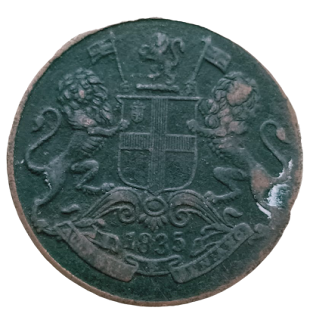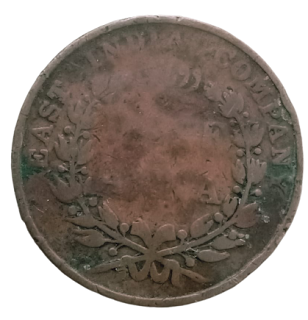The Athenian Owl: A Collector’s Treasure from the 5th Century BCE
Introduction
For experienced coin collectors, few treasures rival the historical significance and aesthetic allure of the Athenian Owl. Minted during the 5th century BCE, these silver tetradrachms are not just remnants of ancient Greece; they are symbols of Athenian prosperity, cultural dominance, and artistic achievement. This article delves into the fascinating world of the Athenian Owl, offering an in-depth exploration of its origins, design, historical context, and enduring legacy in the realm of numismatics.
An image of the silver tetradrachm from ancient Athens, featuring the goddess Athena on one side and an owl on the other side.
Historical Context
The Athenian Owl tetradrachm emerged in a period when Athens was at the zenith of its power and influence. The 5th century BCE, often referred to as the Golden Age of Athens, was marked by unprecedented advancements in art, philosophy, and politics. Under the leadership of statesmen like Pericles, Athens became the cultural and intellectual hub of the ancient world. The city-state’s wealth, derived from its powerful navy and vast trade networks, facilitated the minting of these iconic coins.
Design and Symbolism
The Athenian Owl tetradrachm is celebrated for its exquisite design, which encapsulates the essence of Athenian identity. The obverse features the head of Athena, the patron goddess of Athens, depicted in a strikingly detailed profile. Athena wears a crested helmet adorned with olive leaves and a palmette, symbolizing wisdom, warfare, and the city’s olive industry.
The reverse showcases the owl, an emblem of wisdom and a sacred bird associated with Athena. The owl is depicted standing with its head facing forward, its large eyes capturing a sense of vigilance and intelligence. Beside the owl, an olive sprig and crescent moon are included, signifying peace and the city’s agricultural heritage. The Greek inscription “ΑΘΕ” (short for Athens) further cements the coin’s identity.
Production and Minting
The production of the Athenian Owl tetradrachms was a meticulous process, reflecting the advanced minting techniques of ancient Athens. These coins were struck from high-quality silver, sourced primarily from the rich mines of Laurium in southeastern Attica. The silver purity of these tetradrachms typically exceeded 95%, contributing to their wide acceptance and trust in international trade.
The striking of each coin involved skilled artisans who carved detailed dies. These dies were used to imprint the designs onto silver planchets through a method called hammering. The consistency and precision of the coinage attest to the high standards maintained by the Athenian mint.
Economic Significance
The Athenian Owl tetradrachm played a pivotal role in the ancient economy, functioning as a key medium of exchange across the Mediterranean and beyond. Athens’ dominance in maritime trade, bolstered by its formidable navy, facilitated the widespread circulation of these coins. They became a trusted currency in commercial transactions, from the bustling markets of Asia Minor to the distant ports of Egypt and the Levant.
The reliability and uniformity of the Athenian Owls made them a preferred choice for merchants and traders. Their widespread use also reflects Athens’ economic strength and its ability to project power and influence through monetary means. The coins were not only used for trade but also to pay mercenaries and fund public works, further embedding them into the fabric of Athenian society.
Cultural Impact
Beyond their economic utility, the Athenian Owl tetradrachms hold profound cultural significance. The imagery on the coins reinforced Athenian identity and values, with Athena and her owl symbolizing wisdom, protection, and civic pride. These coins served as a tangible representation of Athens’ divine favor and its role as a beacon of civilization.
The artistic quality of the tetradrachms also reflects the broader cultural milieu of classical Athens, renowned for its achievements in sculpture, pottery, and architecture. The coins are miniature works of art, capturing the aesthetic ideals of balance, proportion, and detail that characterized the period.
Legacy and Modern Collecting
The legacy of the Athenian Owl extends far beyond antiquity, captivating the imagination of collectors and historians alike. For modern numismatists, these coins are prized not only for their historical importance but also for their aesthetic and artistic merit. Collecting Athenian Owls offers a direct connection to the ancient world, providing a tangible link to the people and events that shaped history.
When collecting Athenian Owls, several factors are considered to determine their value and authenticity. These include the coin’s condition, provenance, and any historical documentation. Coins in exceptional condition with clear, well-preserved designs command higher prices in the market. Provenance, or the coin’s ownership history, can also significantly enhance its desirability, particularly if it has been part of notable collections or discovered in significant archaeological contexts.
Preservation and Care
For collectors, the preservation and care of Athenian Owls are paramount. These ancient coins require careful handling to maintain their condition and value. Proper storage in controlled environments, away from extreme temperatures and humidity, is essential. Coins should be stored in protective holders or capsules to prevent physical damage and minimize exposure to air and moisture.
Cleaning ancient coins is generally discouraged, as improper cleaning can damage the patina and reduce the coin’s value. Instead, professional conservation services are recommended for coins that require restoration or stabilization.
Conclusion
The Athenian Owl tetradrachm is more than just an ancient coin; it is a testament to the ingenuity, artistry, and economic prowess of classical Athens. For seasoned collectors, owning an Athenian Owl is akin to possessing a piece of history, a tangible link to one of the most influential civilizations of the ancient world. Its enduring appeal lies in its historical significance, exquisite design, and the rich cultural narratives it embodies.
As collectors continue to seek out these remarkable coins, the Athenian Owl remains a symbol of the timeless allure of numismatics. It invites us to explore the depths of history, appreciate the artistry of the ancients, and connect with a legacy that has transcended millennia. For those fortunate enough to hold an Athenian Owl in their collection, it is not merely a coin but a cherished artifact of human heritage.
---
References
- Seltman, C. (1955). *Greek Coins: A History of Metallic Currency and Coinage Down to the Fall of the Hellenistic Kingdoms*. Methuen & Co. Ltd.
- Kraay, C. M. (1976). *Archaic and Classical Greek Coins*. Berkeley: University of California Press.
- Head, B. V. (1911). *Historia Numorum: A Manual of Greek Numismatics*. Oxford University Press.
By exploring the intricate details and rich history of the Athenian Owl, collectors not only enhance their collections but also deepen their appreciation for the cultural and historical contexts that shaped these extraordinary coins.
















